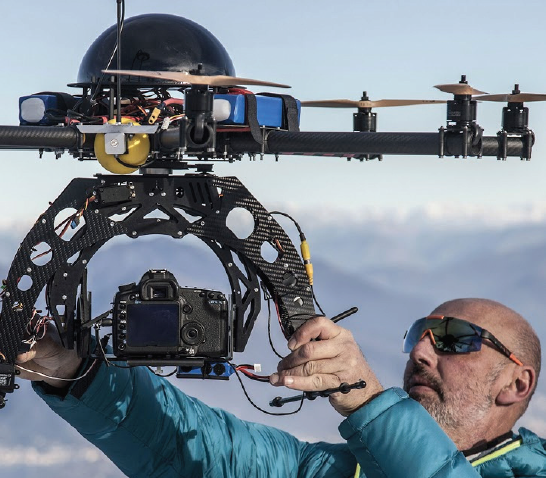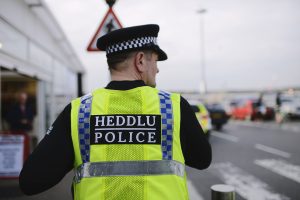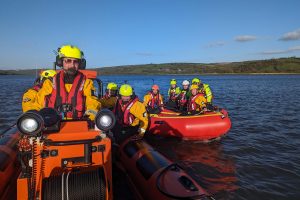
THE DE RIGEUR toolkit of the journalist back in the day was a Speed Graphic camera armed with a flash bulb, which could singe the eyebrows of Dennis Healey when activated, a notepad, a pencil or pen, possibly a satchel of sorts and a stout pair of shoes for sure.
Stanley Phillips was a reporter/ photographer for the Welshman and a couple of other titles in the 1930s, long before The Herald became the people’s choice. He would set off by bike, or in the doctor’s car in emergencies, to cover the local news, which was promptly sent by mail or by telegram if urgent to the head office.
Stan favoured a pipe and would stand and yarn with those he interviewed, more often than not having a cup of tea at his leisure too. He then went back home and developed his sheets of film, washing them under the village pump.
What on Google Earth would he have made of what is on offer today to the humble journalist, no longer in stout shoes and most likely puffing on an eCig contraption while travelling in the modest BMW with connections in every orifice.
One thing that has not changed is that the world was round then and it is round now. The difference between Stan’s view and our view is that we can all now see it through 360 degrees and virtual reality, available to view in all its glory from just about any internet-enabled device smaller than one of Stan’s sheets of film.
Journalism is quickly utilising new technology and gadgetry to provide those seeking the news with a far more interactive and descriptive view of the world, wherever the news may be. 360 degree cameras are being added to the journalist’s toolkit. Google Earth is being used by the leading TV networks around the world to place the viewer at the centre of the action before, during or after an event, without so much as having to find the curator of a museum with a set of keys to blow off the dust from the maps. This is the future for journalism according to Google NewsLab, who are offering training to journalists across the globe.
The Herald attended one of the workshops in Cardiff, where we were shown how Google is aiding and abetting reporters in ensuring the information they are using including words, photos, videos and audio are factually reliable. We have all seen hoax images and hoax videos but Google have provided a system whereby this data can be instantly checked for its legitimacy.
They were also demonstrating the use of Google Earth and Google Maps for journalists to use to illustrate the stories. This may seem familiar to some but the scale and variety of use of Google’s facility is mind boggling.
Huge news corporations have found ways in which to take whatever they can from Google for free and incorporate it into their presentations.
Stan would have had to travel by horse, cart and biplane over weeks to provide a fraction of what the journalist can provide today without leaving his or her drawing room.
The world of 3D, virtual reality and 360 degree views is in demand as the audiences, most of whom are now upwardly mobile young things, turn to their phones for their news content and they want digital media in spades. Google wants to help journalists provide rich media content, which attracts viewers to ‘binge watch’.
We are all familiar with Google as a search engine, Google Maps, YouTube and Google Earth, but there is far more and it is growing. There is Google Public Data, which allows you to access a world of data to create high quality visuals. Google Alerts keep you up to date with the news you want tho see and hear. Google Fusion Tables combine data sets to tell a story using powerful charts, maps, graphs or custom layouts. Google Trends allows you to search data to allow you to bring people the stories they are looking for.
What Google appear to be doing and wanting is placement of as much information and digital media content online and they are encouraging just about anyone to contribute. Journalists can then access this information and weave it into their stories be they international, national or local. Most of the journalists on the training course whooped with joy at what they were seeing but The Herald looks and listens before it leaps and we were slightly skeptical, not to mention suspicious of the motives for Google providing so much for so little, in fact for free.
We were told that the Google NewsLab team consisted of only 10 people. How on Earth could 10 people gather and provide so much information? The truth is that it is we, the Google-reliant public, do so each time we search or ask a question. A clever algorithm takes and regurgitates every single word, number, photo, video and audio file as well as maps gleaned from their street patrols and somehow turns that all into even more searchable and usable content for journalists to use.
We will give one such example to finish off. Let us say that you are writing a story about the 10 most popular towns in Wales. In Stan’s day, he would have had to burn some leather to get around that one. He would have had to construct a survey of sorts and actually go out and ask people questions. Can you imagine doing that today as a journalist? He would then have to calculate all the answers from his questionnaires culminating in a result based on the percentages of answers. He might go to those 10 towns on the Brodyr Davies bus service to get some photos, which would take an age and then eventually put it all together longhand or by typewriter and send in the negative to be magically turned into newsprint. You get the idea, eh?
Today, a simple search on one of Google’s areas for journalists reveals the answers to those questions’ complete with statistics, photos, videos, audio, longitude and latitude and virtual tours, if required, all delivered to the internet-enabled device in the hands of those who just cannot wait until a Friday for the paper version comes out. The name of this magic? Google Fusion Tables.
Now there is something to be said for the good old days and Stan, bless his real wool socks, worked like a Trojan to do his job and we are all much the richer for his archives, paper and photos, which might just fill a large filing cabinet. What we have today is millions of Stanley Phillips across the world sending in their work and millions of us, the public, enabling and enriching that through our internet habits, however intelligent, stupid, significant or insignificant they may be.


















Add Comment